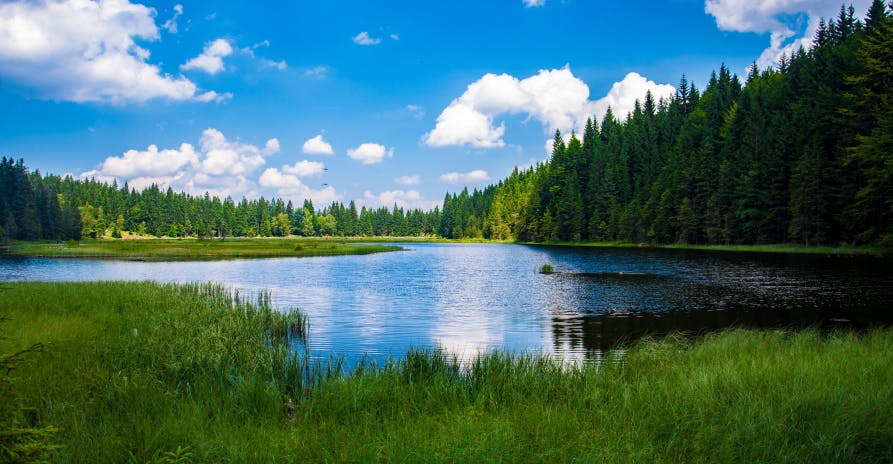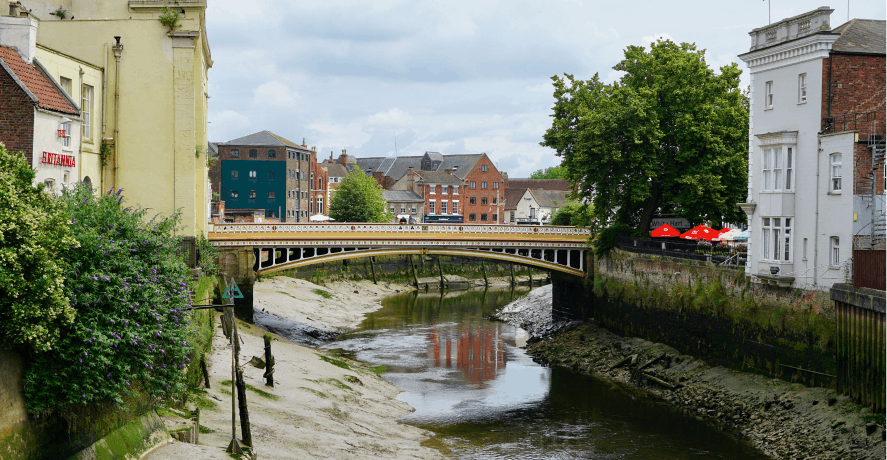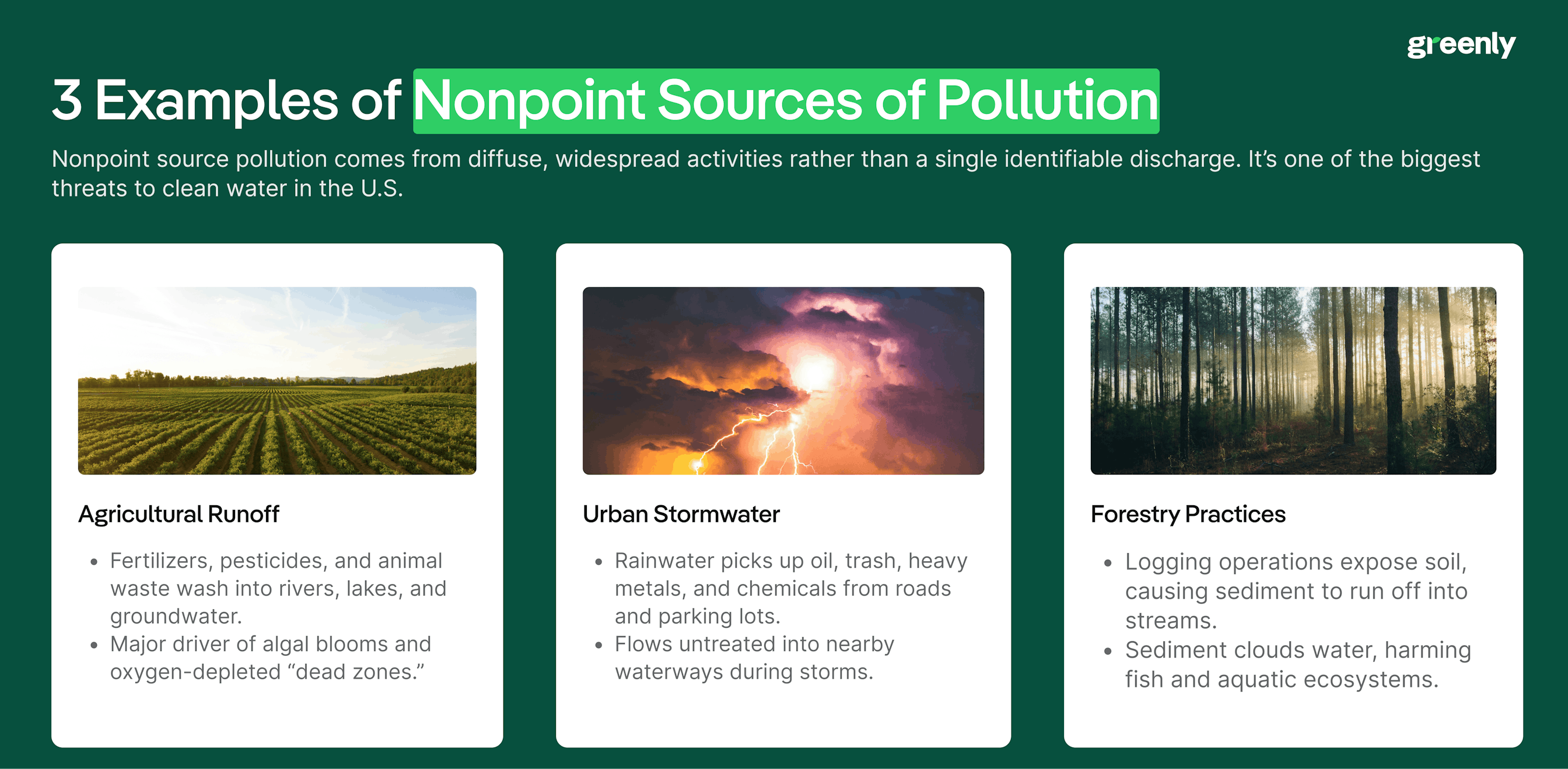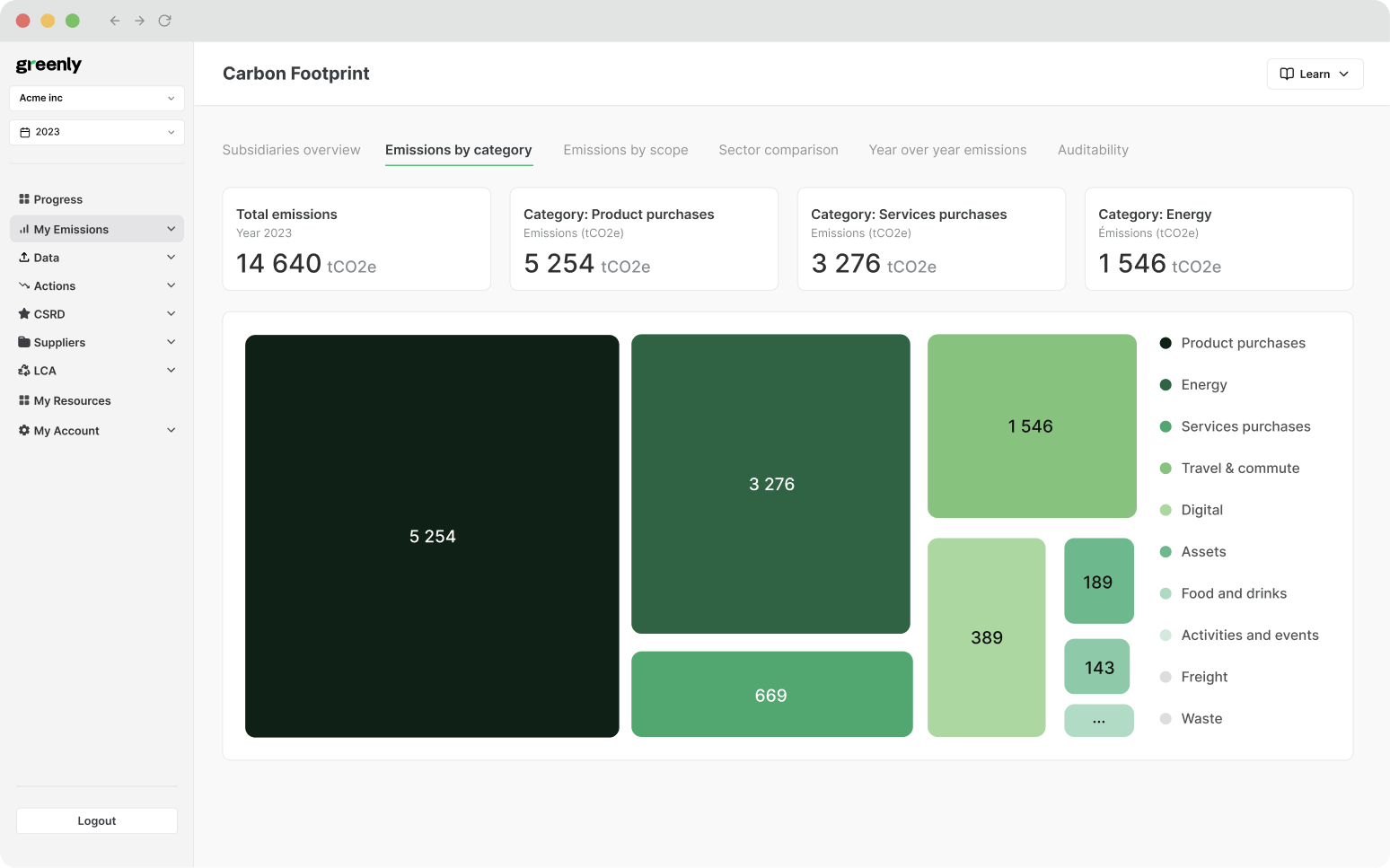
California Climate Accountability Package: SB253, SB261, & SB252
What is the California Climate Accountability Package, and how do SB 253 and SB 261 (SB 219), and SB 252 help the state work towards their environmental goals?
ESG / CSR
Industries



In the midst of the fight against climate change, many remain cognizant of the negative effects of global warming, such as deteriorating air quality, excessive greenhouse gas emissions, and exorbitant amounts of waste in landfills – but many will forget about the importance of clean drinking water, which is where the Clean Water Act comes into play.
What is the Clean Water Act, how does it work, and how does it help to ensure safe drinking water and viable water resources across the country?
The Clean Water Act, also known as CWA, works to create the regulations necessary to ensure basic quality and standards for water across the United States – such as by preventing unwanted pollutants in bodies of water.
The Clean Water Act was developed in order to protect bodies of water from future natural disasters. Several devastating incidents helped encourage the creation of the Clean Water Act in the first place, such as when the Cuyahoga River in Ohio caught on fire back in 1969 due to pollution caused by excessive industrial activity.
The premise of the Clean Water Act was approved back in 1948, and was originally named the Federal Water Pollution Control Act before being revamped in 1972 and switching to the name of the Clean Water Act.
Through the help of the Clean Water Act, the Environmental Protection Agency has been able to incorporate programs to regulate the effects of pollution on water resources.
The overview cards below will reveal how the Clean Water Act has incorporated such programs and initiatives:
The Clean Water Act set clear standards for watersheds, helping restore ecosystems such as the Chesapeake Bay.
The EPA developed nationwide pollutant criteria recommendations to protect surface waters from harmful substances.
The Act made it illegal to discharge pollutants into water sources without obtaining the correct permits.
Funding and standards under the Act have supported major clean-up efforts in the Great Lakes region.
Since its passage, the Clean Water Act has reduced direct pollutant discharges by more than half nationwide.
By controlling toxic discharges, the Act has improved habitats for fish and wildlife in rivers and lakes.
Ultimately, the Clean Water Act seeks to regulate untreated water across the United States and protect residents from the deleterious effects of contaminated water – and protect various bodies of water from pollution and destruction.

The Clean Water Act is responsible for controlling the quality of water by setting standards for how much waste can be emitted for different industries.
In addition to this, the Clean Water Act also helps to create regulations in the event of more catastrophic predicaments, such as oil spills and the release of toxic chemicals. The Clean Water Act has accomplished this through the implementation of various programs designed to help regulate how water is treated.
The interactive flip cards below (move cursor over card to flip) will reveal how the Clean Water Act has proved beneficial in the midst of more disastrous events:
This Clean Water Act program aids in point-source pollution, which is discharged by sewers and factories or other sources with a specific origin, is also managed by one of the programs established by the Clean Water Act – known as the National Pollutant Discharge Elimination System or NPDES.
Another program under the Clean Water Act includes the National Pretreatment Program, which was created to help avoid how many pollutants could be discharged into the sewer system from industrial activity – which ultimately helps to ensure safety amongst wastewater-treatment plants. Bodies of water subject to the improvements to be provided by the Clean Water Act will be put on a list, and are meant to be attended to at a later date when all of the acting parties can organize a plan to effectively restore the body of water.
How does the Clean Water Act help to improve the bodies of water suffering from the negative effects of pollution?
The vertical timeline below will reveal how programs under the Clean Water Act like the National Pollutant Discharge Elimination System or National Pretreatment Program can help preserve and protect bodies of water from pollution:
The National Pollutant Discharge Elimination System requires facilities to obtain permits before releasing pollutants into U.S. waters, keeping rivers and lakes safer.
The National Pretreatment Program prevents industries from discharging harmful chemicals into municipal sewage systems, protecting downstream treatment plants.
EPA works with states to set science-based criteria for pollutants, ensuring waters remain safe for fishing, swimming, and aquatic ecosystems.
The Act restricts dredging and filling in wetlands without permits, helping preserve critical habitats for fish, amphibians, and birds.
CWA programs helped restore water quality in the Great Lakes, reducing phosphorus pollution and supporting fish population recovery.
The Act authorizes emergency actions and penalties for oil spills, aiding cleanup efforts and holding polluters accountable.
There are numerous benefits of the Clean Water Act, such as by helping to provide clean drinking water, improve fisheries, and address water pollution.
Since 1972, the Clean Water Act has helped to remove billions of pounds of pollutants from bodies of water across the United States, which have ultimately helped to provide safer and cleaner drinking water – which in turn benefit the health of Americans and various wildlife.
In fact, many people often fail to realize that consequences of climate change, such as water pollution – can have a profound impact on animals and even their own pets!
Check out our Leaf Media podcast below to learn how climate change and initiatives such as the Clean Water Act actually help to protect not only the planet – but your furry friends, too!
Clearly, the Clean Water Act can prove beneficial and even indispensable for several reasons.
The drop down sections will break down all of the various benefits the Clean Water Act seeks to provide for communities, living creatures, and society as a whole:
However, one of the biggest ways the Clean Water Act has benefited the country is how it has encouraged other states to individually address water pollution, as before the Clean Water Act – few states had imposed their own regulations regarding restoration and preventative care for bodies of water. Without the Clean Water Act, the responsibility to ensure clean water would still solely be in the hands of the federal government.
Many Americans were concerned when Trump took office and what it would mean for climate changes policies and initiative such as the Clean Water Act itself.
Unfortunately, these fears have already come to fruition – with the Trump administration having already declared certain bodies of water as no longer being eligible to be protected under initiatives such as a the Clean Water Act.
The summary cards below will further break down the consequences of the Trump administration pulling back from the se sustainable efforts:
The Clean Water Act hasn’t just helped to improve the environment or society – but the economy, too. Several industries wouldn’t be able to survive without viable water resources, including tourism, restaurants, recreational services, and most notably: agriculture.
Even more so, as climate change continues to worsen – practices geared towards preserving water are becoming more imperative as excessive droughts continue to compromise the sparse water supply left.

The Clean Water Act has successfully helped to restore countless bodies of water across the United States – but what are some rivers and lakes that most may not realize were resurrected thanks to the Clean Water Act?
One of the most prominent examples of the Clean Water Act in action is the Charles River in Boston.
Before the Clean Water Act, the Charles River in Boston was inhabitable for marine life – until the EPA decided to make an effort to make the Charles River swimmable for both fish and people once again in 1995. Through the help of the Clean Water Act utilizing several state, federal, local agencies, and nonprofit institutions – the Charles River was restored by improving the quality of the water in the river with the use of technology to determine the strongest pollutants.
This wasn’t an easy task, given the Charles River was flooded with pollutants, trash, toxic mechanical pieces from old cars, and sewage elements. Many would be unable to guess that the Charles River was once a threat to the health of living organisms and the environment, but with the help of the Clean Water Act – Boston’s river can once again bring joy through recreational activities, provide a healthy home for fish, and cultivate safe water to be used across various industries.
The summary cards below will reveal four other examples of how the Clean Water Act helped to restore various bodies of water:
Ultimately, the work of the Clean Water Act in combination with other entities and various sources of financial support have not only helped to re-instill beauty in the Charles River – but have helped to improve the health of both those living near the Charles River as well as the environment.
Has the Clean Water Act been this beneficial for its other projects?

Yes, the Clean Water Act (CWA) is known to be one of the most successful pieces of environmental legislation to have ever been passed.
The Clean Water Act has proven beneficial, as several municipalities across the United States have been granted funding to help rectify their wastewater-treatment plants due to the Clean Water Act’s work.
In fact, the Clean Water Act was revised in 1987 to help accelerate the benefits of the Clean Water Act – such as by creating a new fund called the State Water Pollution Control Revolving Fund. The Clean Water Act has also been adjusted to adhere to the environmental problems presented with large bodies of water across the United States, such as the Great Salt Lake – which is drying out and releasing harmful substances, ultimately interfering with the surrounding air quality.
The overview cards below will reveal which bodies of water the Clean Water Act has proven successful with:
It is clear that the Clean Water Act has made great strides in improving overall human health and protecting the environment, especially in conjunction with efforts from the Environmental Protection Agency.
However, the Clean Water Act is still subject to several road blocks – such as controlling nonpoint-source pollution, mitigating the presence of motor oil in floods from rain, overflows in sewers, unsustainable infrastructure, and various sewage disposal issues that remain present throughout the industry.
In short, while there is ultimately less pollution going into bodies of water across the United States than before, especially thanks to new updated environmental measures implemented by the Biden administration, the Clean Water Act could still improve as it is still suffering from nonpoint sources of pollution.
Nonpoint sources of pollution is when pollution happens from rain or snow overflowing a landscape, and in turn, collecting various particles deemed as pollutants that can then flow into city streets or farmlands through sewers. An example of this is when there is an extensive amount of rain, and excess oil on the streets mixes in with the rainfall – which then drains into a city’s sewage system.
Ultimately, nonpoint sources of pollution are a form of indirect pollution. This phenomenon is also referred to as polluted runoff, and remains as a major source of pollution for several bodies of water across the United States.


The Clean Water Act has been around for over 50 years, and yet – there are still countless bodies of water that continue to suffer from the effects of pollution. It may seem improbable for the Clean Water Act to control these nonpoint sources of pollution, but if there was a greater collective effort to rectify the safety and cleanliness of water across the country – then the Clean Water Act wouldn’t have to work so hard.

One of the ways the Clean Water Act could improve is if more states continued to take individual action to rectify their bodies of water. For instance, if someone were to fall into the Potomac River (which cuts through the DMV area of Maryland, Virginia, and Washington D.C.) prior to the Clean Water Act – tetanus shots would have been required. If states set their own regulations separate from those required by the Clean Water Act, there wouldn’t be as many rivers, streams, or lakes desperate for rehabilitation by the Clean Water Act itself.
The Clean Water Act isn’t a perfect regulation. CWA can’t override private property – meaning private bodies of water could still be polluted or filtering into sewer systems and impacting other industries. The Clean Water Act also doesn’t have the authority to monitor large areas of land, leaving these areas susceptible to the negative effects of contaminated water, too.
In the end, the Clean Water Act would be most successful if other organizations, industries, and state governments played their part in ensuring the protection of clean and safe water.
If reading this article on the Clean Water Act, or CWA, has made you interested in reducing your carbon emissions to further fight against climate change – Greenly can help you!
The Clean Water Act, otherwise known as CWA, is just one of the many environmental regulations your company might have to comply with. Check out our legislation tracker here to see which rules your company has to adhere to.
Greenly can help you make an environmental change for the better, starting with a carbon footprint assessment to know how much carbon emissions your company produces.
